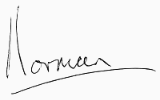norman.comfort@getcomfortable.co.uk, or talk to me on 07530 708125. Let's do this.....
The Alcohol Wallet: How Younger Consumers Are Redefining Their Drinking Habits
In recent years, there has been a noticeable shift in how younger consumers approach alcohol consumption. For many younger people, drinking is no longer an everyday or social necessity but rather about experience, quality, and moderation. I have started to think that this shift can be likened to managing a budget or, more specifically, an “alcohol wallet.” Just as we might allocate our finances toward more valuable and satisfying purchases, younger consumers are increasingly applying a similar philosophy to their alcohol consumption. They are limiting themselves to 10-14 units a week, choosing carefully what they consume and savoring each experience.
The Rise of the Alcohol Wallet
The concept of the “alcohol wallet” reflects a more conscientious approach to drinking. Rather than mindlessly consuming large quantities, younger consumers are setting clear boundaries on how much alcohol they intake, often capping their consumption at a range of 10 to 14 units per week. This conscious decision-making process mirrors the budgeting of money: most people wouldn’t spend their entire budget on a few low-quality items when they could have fewer, higher-quality ones – they would strike a balance that suits them.
Several factors drive this trend. Health awareness plays a significant role, with younger generations more mindful of the impact of alcohol on their well-being. They are keenly aware of how alcohol affects their physical and mental health and are thus motivated to moderate their intake. Furthermore, there is a growing desire to maintain a balanced lifestyle, where alcohol is enjoyed in moderation without negatively impacting other aspects of life, such as fitness, productivity, or mental clarity.
Quality Over Quantity
As younger consumers use their “alcohol wallets” more prudently, they are also becoming more selective about what they drink. There is a noticeable shift towards quality and variety.
Consumers are increasingly drawn to products that offer a unique or superior experience. This could mean choosing a craft beer with a distinct flavor profile, a small-batch gin with locally sourced botanicals, or a biodynamic wine that tells a story of its terroir. For these consumers, drinking is not just about alcohol content but about the journey and experience that each product offers.
The Expanding Palate
This selective approach has led to a broader exploration of alcoholic products. Younger drinkers are keen to try new things, whether a rare wine from an obscure region, a cocktail made with artisanal ingredients, or a fusion beer that blends different brewing styles. This exploration aligns with a broader trend of younger generations seeking authenticity and connection in their experiences.
As a result, we are seeing a growing interest in products that are crafted with care and have a story to tell. Producers who focus on quality, sustainability, and authenticity are likely to resonate more with these consumers.
Marketing in the New Drinking Paradigm
For wine businesses, this shift represents both a challenge and an opportunity. Traditional approaches to pricing and distribution may no longer appeal to the younger demographic. On the other hand, there is a tremendous opportunity to connect with consumers who value quality, craftsmanship, and authenticity.
Effective marketing strategies should focus on storytelling, emphasizing the uniqueness and quality of the product. Highlighting sustainable practices, the origin of ingredients, and the passion behind the production process can help build a deeper connection with younger consumers. Moreover, embracing digital platforms and social media is crucial, as these are the channels through which younger consumers often discover new products and experiences.
In summary
The “alcohol wallet” is not just a trend; it’s a fundamental shift in how younger consumers approach drinking. By viewing their alcohol consumption as a limited resource, they are more selective and intentional about their choices. This trend towards moderation, quality, and variety presents a unique opportunity for wine businesses to reimagine their marketing strategies and engage with a new generation of consumers who value experience over excess.
For those willing to adapt and innovate, the future holds a promising market of discerning, informed, and adventurous consumers ready to explore the world of fine wines and spirits in a whole new way.

